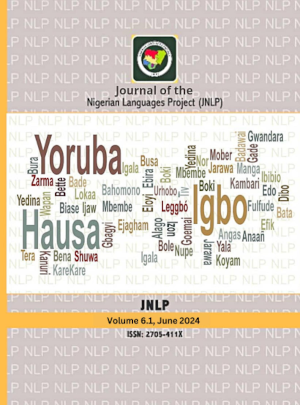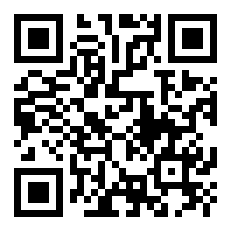Creating talking and illustrated dictionaries: An example of Ọrọ
DOI:
https://doi.org/10.60787/jnlp.v6i1.63Keywords:
Ọrọ language, online dictionary, talking dictionary, illustrated dictionary, living dictionariesAbstract
Dictionaries are important linguistic products. In terms of functions and application, they are relevant for language teaching and learning as well as for language preservation. They vary in types, including general-purpose or specialized, monolingual or bilingual, illustrated or pictorial, print or electronic, talking, etc. This study created an online talking and illustrated dictionary of Ọrọ, a Lower Cross language in Nigeria which until now had no such resource. The research method adopted is qualitative descriptive while the sampling method combined both purposive and snowball techniques. Data for the study were collected from three native speakers of Ọrọ, with the lead consultant serving as a co-author of this article. Over 300 entries were made, sourced from the modified version of Swadesh Wordlist by the Nigerian Language Project. The online platform on which the dictionary was created is www.livingdictionaries.app, a web portal dedicated to creation of dictionaries for endangered and low-resource languages. The study found that, today, linguists and community members can make web-based dictionaries for any language at no cost by using already available tools such as the Living Dictionaries platform.
References
Austin, P.K. (2006). Data and Language Documentation. In Gippert, J., Himmelmann, N.P., & Mosel, U. (eds.) Essentials of Language Documentation. Berlin: Mouton de Gruyter.
Bergenholtz, H. and Gouws, R.H. (2012). What is Lexicography? Lexikos AFRILEX Series 22.
Burkhanov, I. (1998). Lexicography: A Dictionary of Basic Terminology. Wydawn: Wyższej Szkoły Pedagogicznej w Rzeszowie
Dziemianko, A. (2022). The Usefulness of Graphic Illustrations in Online Dictionaries. In ReCALL, Vol. 34, No. 2 (pp. 218-234).
Ekpo, G. (2022). Abiziri Ọrọ (Ọrọ Orthography). Abuja: NERDC
Ekundayo, A.S. (1982). Thoughts on a Yorùbá Monolingual Dictionary. In Afolayan, A. (ed.) Yorùbá Language and Literature. Ife: University of Ife Press.
Ezeh, N.G., Anyanwu, E.C., and Onunkwo, C.M. (2022). Dictionary as an Effective Resource in Teaching and Learning of English as a second Language: Complementing Instructions. 15, No 4 (pp. 108-116).
Gangla-Birir, L. (2005). The Use of Pictorial Illustrations in African Language Dictionaries. In Lexikos AFRILEX 15 (pp. 38-51).
Gauton, R. (2008). Bilingual dictionaries, the Lexicographer and the Translator. Lexikos AFRILEX Series 18 (pp. 106-118).
Granger, S. and Paquot, M. (2012). Electronic Lexicography. London: Oxford University Press.
Hakim, M.A.R., Aryati, S.N., and Kurniawan, D. (2020). Investigating E-Dictionaries on speaking Ability among University Students in Malaysia. In Universal journal of Educational Research, Vol. 8, no. 12(pp. 6536-6551).
Hartman, R.R.R. and James, G. (2002). Dictionary of Lexicography. London: Routledge Taylor and Francis Group.
Humbley, J. (2018). Specialised Dictionaries. In Fuertes-Olivera, P.A. (ed.) The Routledge Handbook of Lexicography. London: Routledge Taylor and Francis Group.
Landau, S. (2001). Dictionaries: The Art and Craft of Lexicography. Cambridge: Cambridge University Press.
Liden, D. (2022, November 26). What is Talking Dictionary? Retrieved on 25th December, 2022 from https://languagehumanities.org/what-is-talking-dictionary.htm
Living Tongues Institute. (2022). About Living Tongues Institute for Endangered Languages. Retrieved on 22nd December, 2022 from https://livingtongues.org Macmillan Dictionary Blog, (2012, November 5). Stop the presses — the end of the printed dictionary.
Retrieved on 20th December, 2022 from http://www.macmillandictionaryblog.com/bye-print-dictionary
Mandis, I. (2020, May 11). Talking Dictionaries: Creating Language Accessibility Online. Retrieved on 25th December, 2022 from https://medium.com/wikitongues/talking-dictionaries-creating-language-accessibility
McArthur, T. (2019). Oxford Companion to the English Language. London: Oxford University Press.
Moon, R. (2009). The Cobuild Project. In Cowie, A.P. (ed) The Oxford History of English Lexicography. London: Oxford University Press.
Nesi, H. (2009). Dictionaries in Electronic Form. In Cowie, A.P. (ed) The Oxford History of English Lexicography. London: Oxford University Press.
Nwanna, E. E., Oyeleye, S. I., and Oboh, G. (2020). Editan (Lasianthera Africana) leaf-inclusive diets modulates some neuronal enzyme activities and antioxidant status of cyclophosphamide-treated Wistar rats. Journal of Food Biochemistry, Vol. 45, Issue 3.
Prinsloo, D., Prinsloo, J., and Prinsloo, D. (2018). African Lexicography in the Internet Era. In Fuertes-Olivera, P.A. (ed.) The Routledge Handbook of Lexicography. London: Routledge Taylor and Francis Group.
RCGL, (2021). MA in Corpus Lexicography. Retrieved on 22nd December, 2022 from Research Group in Computational Linguistics (RGCL)
http://rgcl.wlv.ac.uk/2015/10/26/ma-in-corpus-lexicography/
Rehg, K. L. (2018). Compiling Dictionaries of Endangered Languages. Campbell, L. (eds) Oxford Handbook of Endangered Languages.
In Rehg, K.L. and London: Oxford University Press.
Somantri, D. C., Dayanti, F., and Yusuf, N.C. (2021). The Use of Talking Dictionary in Learning Pronunciation among Senior High School Students in Cianjur. In Proceedings International Conference on Education of Suryakancana: Iconnects (pp. 264-268).
Tarp, S. (2018). The concept of Dictionary. In Fuertes-Olivera, P.A. (ed.) The Routledge Handbook of Lexicography. London: Routledge Taylor and Francis Group. Telegraph, the. (2010, August 29). Oxford English Dictionary ‘will not be printed again’. Retrieved
on 21st December, 2022 from http://www.telegraph.co.uk/culture/books/booknews/7970391
Udoh, I. (2021). LDD 614: Introduction to Language Documentation and Description. [Course material] Department of Linguistics and Nigerian Languages, University of Uyo.
Uguru, J.O. and Okeke, C.O. (2020). On Pronunciation in a Multilingual Dictionary: The Case of Lukumi, Olùkùmi and Yorùbá Dictionary. In Lexikos Volume 30 (pp. 519-539).
Urua, E. (2004). The Nigerian Nation: Nigerian Peoples and Cultures. Uyo: University of Uyo Press, pp. 134-135.
Urua, E., Ekpeyong, M., and Gibbon, D. (2004). Uyo Ibibio Dictionary. Access: www.homes.uni-
bielefeld.de/Dafydd_Gibbon_Publications.pdf
Uya, O.E. (1984). A History of Oron People of the Lower Cross River Basin. Oron: Manson Publishing Company.
Willie, W. (2017). LID 621: Corpus Linguistics and Lexicography. [Course material] Department of Linguistics and Nigerian Languages, University of Uyo.











